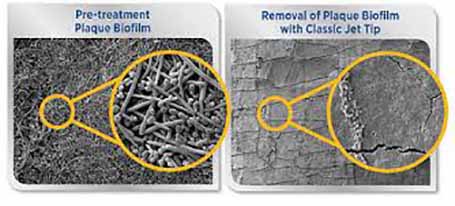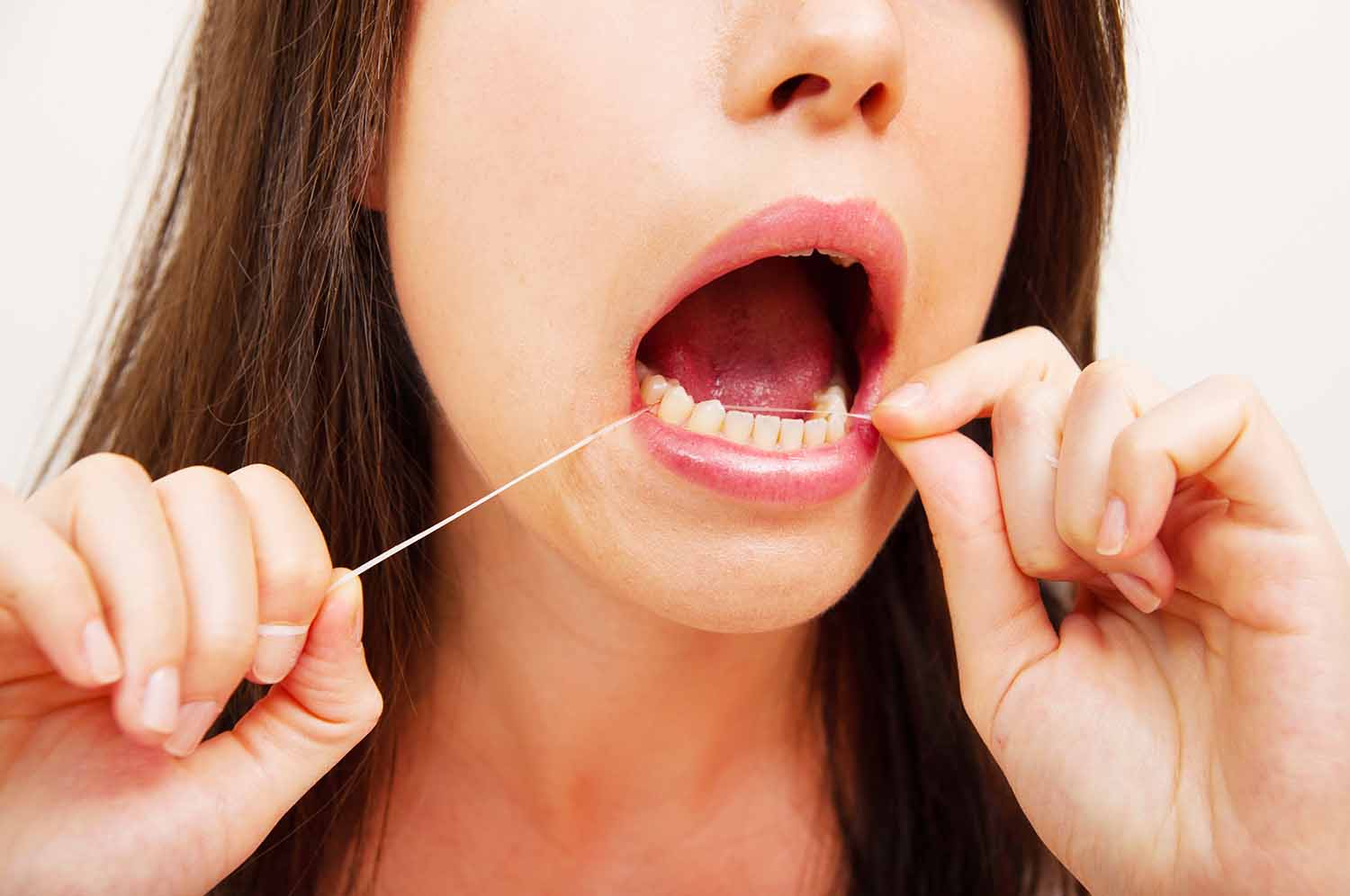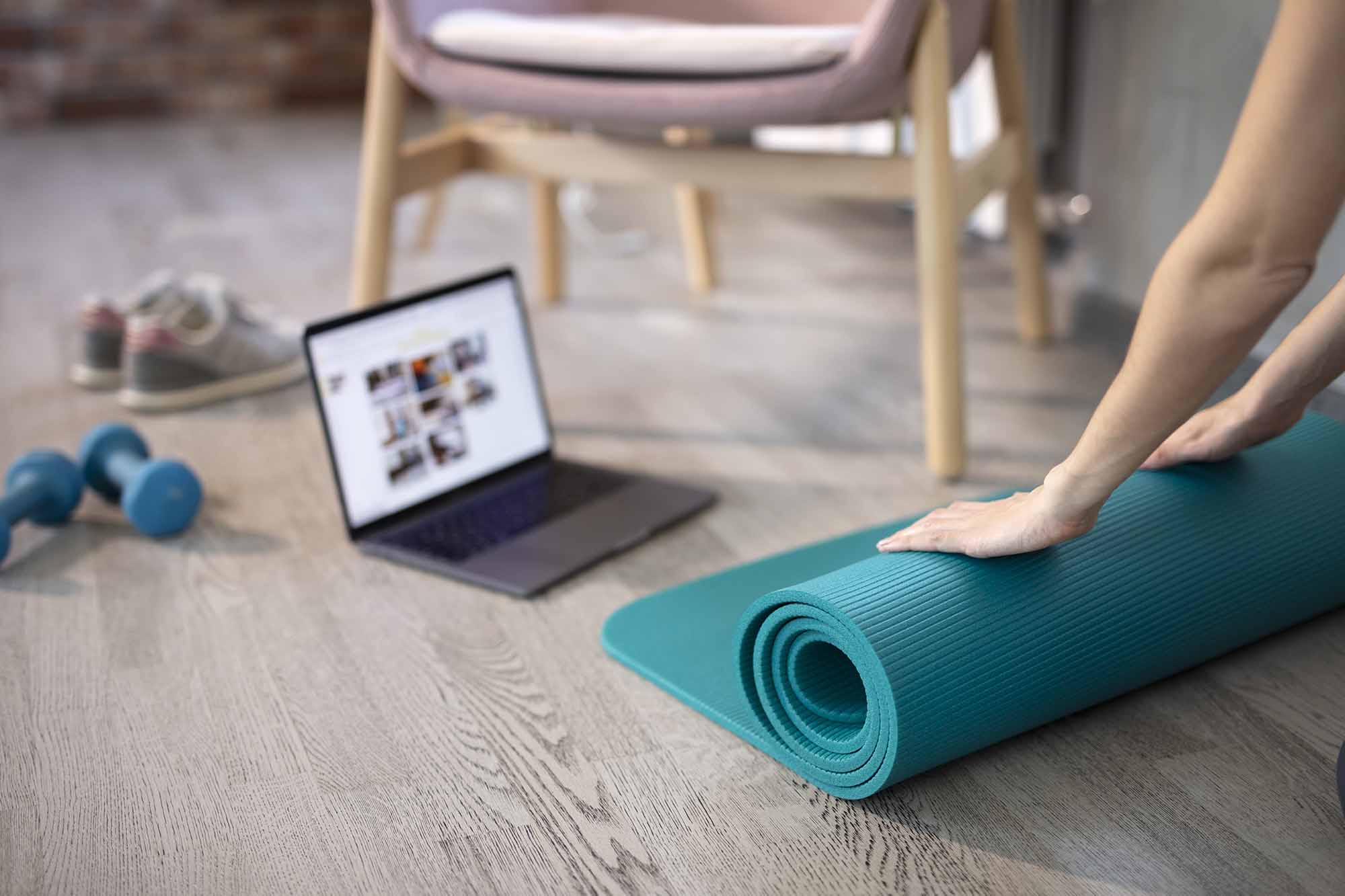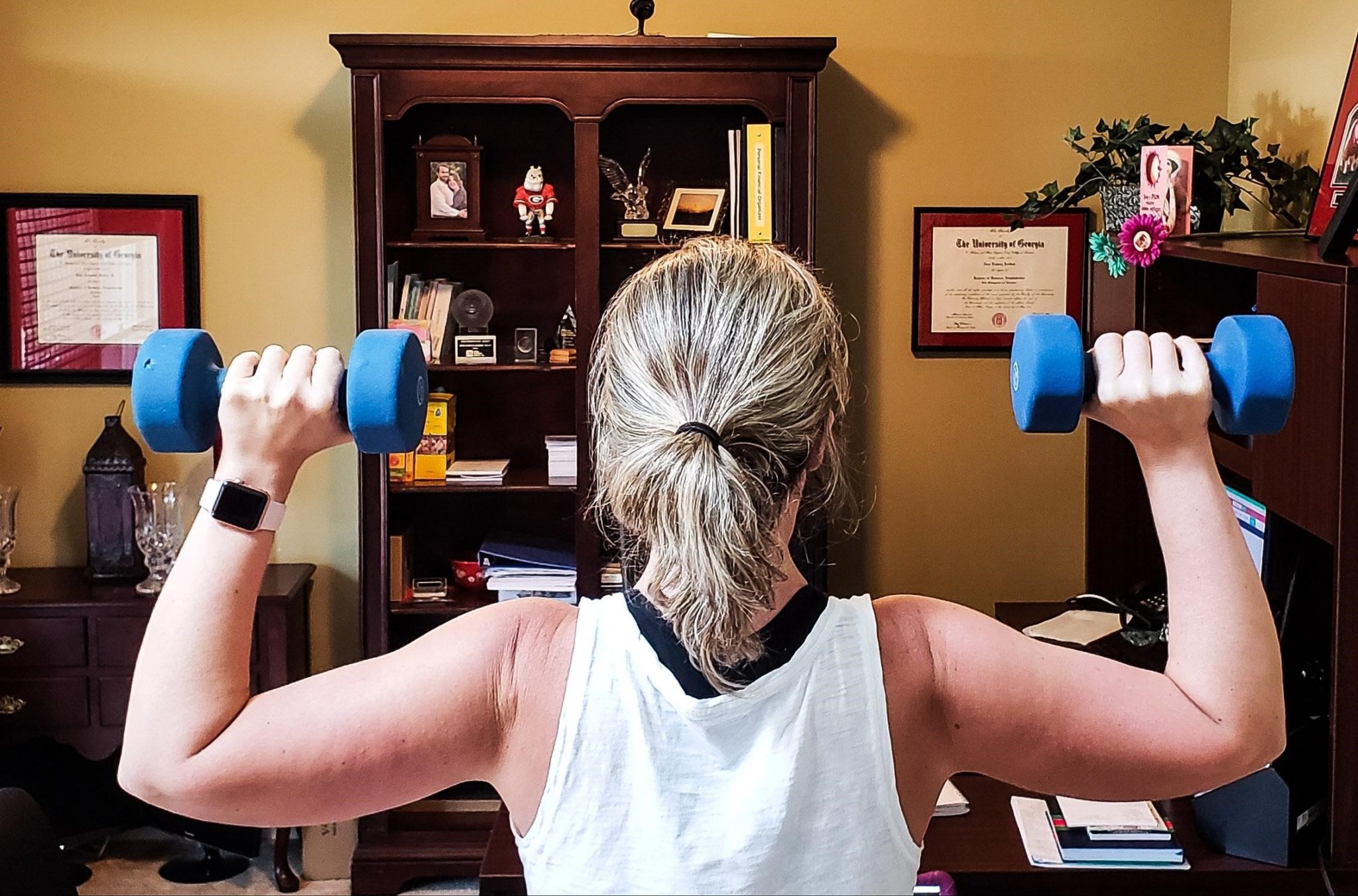Ok, I admit it. I hate flossing. I am not exactly sure why. Maybe it is the feel of the string against my gums. Or how hard it is to release the floss when it is forced down between teeth that are very close together. Whatever the reason, I just don’t like to do even though I know that it is “good for me.” So, I don’t. But I have discovered a great alternative to string flossing. It is the water flosser. Let me explain.
Like me, most people don’t floss daily
Evidently, I am not alone when it comes to an aversion to flossing. A 2015 survey found that 18% of respondents would rather wash dishes and 14% would rather clean the toilet than floss! In fact, only 30% of the population flosses daily which is about the same percentage of people who say they never floss. It is also close to the same number of people who admit to lying to their dentists about how often they floss.
A few years ago, after enduring endless “bad flosser” lectures from my dentist, hygienist, and husband, I decided to get my teeth cleaned monthly instead of twice a year. I thought that would make up for my flossing failures, but it did not. The plaque still built up and my gums were still inflamed.
My dentist eventually recommended that I buy a water flosser and I was glad that I did. Warm water pulsing against my gums is ever so much more pleasant than forcing waxy string between my teeth.
So, when I got a pitch to do a story on Waterpik’s Water Flosser having received the American Dental Association Seal of Acceptance, I decided to learn more about water flossing.
Full disclosure: Waterpik sent me a complimentary Aquarius Designer Series Waterpik Waterflosser to try out (clicking on the affiliate link earns TDWI a small commission). As its name implies it is nicer looking, smaller, and lighter than my older water flosser.
I also interviewed Deborah Lyle, a registered dental hygienist with more than 35 years in the field, who serves as Waterpik’s Director of Professional and Clinical Affairs. You can listen to the interview here.
Why floss anyway?
Plaque is a soft, sticky film containing millions of bacteria that constantly forms on your teeth. Although brushing can remove plaque from the front and back of your teeth, it is not an effective way to remove plaque and food particles that wedge in between teeth and below the gum line.
If not removed daily, plaque can harden into tartar, a thick white substance that you can see and, in some cases, feel with your tongue. Tartar is much more difficult to remove than soft plaque. It may require a trip to the dentist so the hygienist can scrape it away.
The bacteria that live in plaque thrive on sugars in the foods we eat. As a by-product of their metabolism, they produce acids that break down tooth enamel. This can result in those loathsome cavities (also known as caries) that require drilling and filling.
Left unchecked, plaque can cause gums to become inflamed: red, swollen, and prone to bleeding. This is a condition known as gingivitis. It is an early stage of gum (periodontal) disease.
Gum disease not only places teeth at risk of decay or loss, but it has been associated with increased risk of health problems elsewhere in the body, such as heart disease, diabetes, dementia, rheumatoid arthritis, and premature birth.
How do water flossers work?
Water flossers allow users to direct pulses of water under pressure to the areas hard to clean with brushing alone. The flossers come with a variety of attachments including brushes that help people with braces clean between the wires.
You fill up a reservoir with warm water and point the tip of the flosser toward the teeth, systematically aiming at the gum line and in between the teeth.
Usually, you do this after brushing and rinsing, but I have, on occasion, used the flosser first, only to be shocked by the large amount of food particles flushed out of my mouth by the flosser.
Even worse than seeing all that stuff in the sink is the new-found knowledge that had I not water-flossed after eating, all of that debris would be sitting around my teeth, feeding the bacteria that will rot my teeth and ruin my gums. How’s that for motivation?
Are water flossers better than other flossing tools?
In addition to water flossers, there are a variety of other flossing tools (aka interdental cleaning aids) that are available. These include string, waxed string, toothpicks, interdental brushes, and air flossers. How can you figure out which one is best for you?
First of all, the most important success factor for any flossing tool is that you actually use it at least once a day. This is because plaque builds up every day and can harden into tartar within 48 hours.
So, you need to find a technique that fits into your life and that you enjoy (or at least don’t dread). And then you need to establish a routine that you can easily follow.
I leave my water flosser next to the sink as a constant reminder that I need to use it before I go to bed at night. Tucking it away in a closet is a sure-fire way to skip a floss or two until, the next thing you know, you aren’t doing it at all.
Related content: Oral Health and Pregnancy: What You Need to Know
What does science say about the effectiveness of water flossers?
A systematic review of scientific papers (known as a meta-analysis) was published in the Dentistry Journal in June 2019. The paper, “An Overview of Different Interdental Cleaning Aids and Their Effectiveness,” includes the following findings from the studies that they reviewed:
- Oral irrigators are able to remove supragingival (above the gum line) plaque. They also flush out subgingival (below the gum line) bacteria and other debris
- They reduce pro-inflammatory cytokines (IL-1β and PGE2) in patients with mild to moderate periodontitis and diabetics thus reducing gum inflammation
- Further, they facilitate the removal of subgingival biofilm without harming soft tissue
- The levels of bacteria found in the blood after water flossing were similar to toothbrushing, scaling and chewing
- Oral irrigators may be more effective than dental floss or interdental brushes in reducing bleeding, plaque, or probing depths
- Oral irrigators appear to reduce inflammation independent of plaque removal
- No special motor skills are necessary. Even, 6 year-olds were able to use them properly
Another meta-analysis published in 2018 in the Journal of Periodontology looked at the impact of a variety in interdental hygiene aids (including oral irrigators) on two different parameters of gum health:
- Gingival inflammation (Gingival Index or GI)
- Bleeding-on-probing (BOP)
They found that oral irrigators and interdental brushes had the highest probability of improving the GI. However, the probability toothpicks and string floss doing the same was “near zero. All of the interdental aids except toothpicks were better than doing nothing at all.
They also concluded that “interdental brushes and water-jets ranked high for reducing gingival bleeding.”
Both papers point out that recommendations regarding which type of interdental cleaning aid to use should be customized to the needs of individual patients instead of insisting on the use of one particular type of device.
Neither of these studies had industry funding although one of the authors of the second study had received unrestricted research funding from WaterPik in the past.
The Cochrane review – conflicting results
A Cochrane review of the relevant scientific literature, titled “Home use of interdental cleaning devices, in addition to toothbrushing, for preventing and controlling periodontal diseases and dental caries,” was published in April 2019. It found the following:
- “Very-low certainty evidence suggested oral irrigators may reduce gingivitis measured by GI at one month (SMD -0.48, 95% CI -0.89 to -0.06; 4 trials, 380 participants), but not at three or six months.
- Low-certainty evidence suggested that oral irrigators did not reduce bleeding sites at one month (MD -0.00, 95% CI -0.07 to 0.06; 2 trials, 126 participants) or three months, or plaque at one month (SMD -0.16, 95% CI -0.41 to 0.10; 3 trials, 235 participants), three months or six months, more than toothbrushing alone.”
It is important to point out two things:
- Cochrane reviews are usually rigorous and therefore reliable
- Only 5 studies on water flossers, each with relatively small numbers of people, were included in the review.
Some interesting industry-funded studies
The first one was published in Compendium of Continuing Education in Dentistry in 2009. Deborah Lyle was the second author of this paper. I am including it here despite the potential bias related to industry funding because the methodology is so interesting.
Extracted teeth were sliced up and then left to stew in saliva for four days. Then, most of the tooth slices were cleaned with one of two different Waterpik tips. Afterward, they were examined with a scanning electron microscope (SEM). Two slices were untreated and served as controls.
Both of the tips removed more than 99% of the plaque after a 3-second exposure to medium pressure via the device.
Here are the SEM photos from one of the Waterpik websites:

Other Waterpik-funded studies include the following:
- The Waterpik Water Flosser was 51% more effective than string floss for reducing gingivitis after 4 weeks of use (Again, Lyle is an author on this paper).
- After 30 days of use, the Water Flosser was more than twice as effective as string floss for reducing bleeding on probing in patients with implants.
- Two studies published in the Journal of Clinical Dentistry, one in 2012 and another in 2015 showed the Waterpik Water Flosser to be more effective than Sonicare’s Air Floss for reducing clinical signs of inflammation and reducing gingivitis and plaque. Both studies were funded by research grants from Waterpik and listed Deborah Lyle as the second author.
Related content: How Video Technology Can Help Build Trust With Dental Patients
My personal experience with water flossing (this is known as an anecdote)
Shortly after I started using my water flosser, I had a visit with my dental hygienist. To my delight, she couldn’t stop raving about my gums – it made me blush! She told me my gums were now pink instead of dusky color they were previously. And there was no bleeding at all indicating a great improvement in my gum health. My reward? She recommended moving my monthly cleanings to every three months.
When I use my water flosser faithfully, I have continued to have good results that I am pretty sure I can attribute to the flosser. This is because I don’t take it with me when I travel (which I do a lot). If I get back from a trip too close to my next hygienist visit, she can really see the difference. Water flossing works for me.
Here is a link to the flosser I use. (see affiliate disclaimer in footer) I love it and so does my husband. It is also an Amazon bestseller.
****
By the way, I have tried several different travel water flossers, but so far have not found them to be a good alternative. They take up a lot of room in my carry-on and the water tanks are too small for thorough cleaning without a refill. I actually packed my regular flosser on my winter vacation this year.
If you have found one that works for you, please share the information in the comment section below.
So, what is the bottom line?
- You should brush and floss daily no matter what technique you use.
- There is evidence that suggests water flossing is at least as effective as string flossing.
- When you factor in low compliance with string flossing, water flossers might be particularly beneficial for floss haters.
- Water flossing appears to be more effective than air flossing, but the studies showing this are funded by Waterpik.
For flossing haters, water flossing is a great alternative to string flossing.
That’s my opinion. I would love to hear yours.
**LOVE OUR CONTENT? Want more information on Dentistry and Oral Health? SIGN UP FOR OUR WEEKLY NEWSLETTER HERE**
Disclosure: I was not paid to write this article, but I did receive a complementary Aquarius Designer Series Waterpik Waterflosser to try out.
Originally published on 5/30/17, this article has been updated for republication.
Patricia Salber, MD, MBA
Website:
https://thedoctorweighsin.com
Patricia Salber, MD, MBA is the Founder. CEO, and Editor-in-Chief of The Doctor Weighs In (TDWI). Founded in 2005 as a single-author blog, it has evolved into a multi-authored, multi-media health information site with a global audience. She has worked hard to ensure that TDWI is a trusted resource for health information on a wide variety of health topics. Moreover, Dr. Salber is widely acknowledged as an important contributor to the health information space, including having been honored by LinkedIn as one of ten Top Voices in Healthcare in both 2017 and 2018.
Dr. Salber has a long list of peer-reviewed publications as well as publications in trade and popular press. She has published two books, the latest being “Connected Health: Improving Care, Safety, and Efficiency with Wearables and IoT solutions. She has hosted podcasts and video interviews with many well-known healthcare experts and innovators. Spreading the word about health and healthcare innovation is her passion.
She attended the University of California Berkeley for her undergraduate and graduate studies and UC San Francisco for medical school, internal medicine residency, and endocrine fellowship. She also completed a Pew Fellowship in Health Policy at the affiliated Institute for Health Policy Studies. She earned an MBA with a health focus at the University of California Irvine.
She joined Kaiser Permanente (KP)where she practiced emergency medicine as a board-certified internist and emergency physician before moving into administration. She served as the first Physician Director for National Accounts at the Permanente Federation. And, also served as the lead on a dedicated Kaiser Permanente-General Motors team to help GM with its managed care strategy. GM was the largest private purchaser of healthcare in the world at that time. After leaving KP, she worked as a physician executive in a number of health plans, including serving as EVP and Chief Medical Officer at Universal American.
She consults and/or advises a wide variety of organizations including digital start-ups such as CliniOps, My Safety Nest, and Doctor Base (acquired). She currently consults with Duty First Consulting as well as Faegre, Drinker, Biddle, and Reath, LLP.
Pat serves on the Board of Trustees of MedShare, a global humanitarian organization. She chairs the organization’s Development Committee and she also chairs MedShare's Western Regional Council.
Dr. Salber is married and lives with her husband and dog in beautiful Marin County in California. She has three grown children and two granddaughters with whom she loves to travel.
Comments:
Leave a Reply
Comment will held for moderation

















Nice post… I really impressed after reading your blog. Thanks for sharing wonderful information
We work with nursing care and provide doctor services. In providing our important services, this important article will play a helpful role. Thank you
Flossing your teeth is a wonderful technique to clean them and take care of hygiene. Even after brushing, there are a lot of germs and food particles which are there in between our teeth where brush cannot reach. Through flossing one can clean overall teeth. Thanks for sharing!
Water flossing is a good method to remove plaque and keep the mouth clean. Also Its very fast than normal flossing.
My kids hate to floss their teeth with string! I think purchasing a water flosser will hopefully encourage them to improve their oral hygiene :)
I used to hate to floss, then my hygienist suggested flossing in the shower. I found that a great recommendation. I get the work done and get to stay in the shower a couple of minutes longer. Rarely miss. Recommended it to my kids and they’re doing it too.